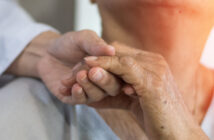Dr Rajvinder Samra, a Lecturer in the Faculty of Wellbeing, Education & Language Studies at The Open University has provided insight into what the findings of the Global Health 50/50 report means in relation to educating and training the next generation of doctors. The Global Health 50/50 report highlights how many international global health organisations that state their commitment to gender equality still have not made clear gender equality policies in their own workplaces. This is a worrying trend.
In relation to medicine, gender disparities in doctors’ wellbeing, training and career progression are well-established. Women represent about half of the medical student intake in the USA and EU, but are still under-represented at higher positions in their fields, with only 16% of medical schools in the USA led by female deans.
Shockingly, women doctors have also been found at a 30-60% greater risk of burnout than their male counterparts, with alcohol abuse happening at a two-fold greater rate. There is a higher risk of suicide in female doctors, which is thought to be related to gender role stress. Medical education and training is key in delivering messages about gender and being a good doctor.
Medical school teaches men to be doctors and women to be ‘women doctors’, with expectations of being approachable, sympathetic and empathetic.
 There is a need for a shift from gender-blindness to gender-responsiveness in medical education and training. Gender-blindness tends to involve the avoidance or ignorance of issues to do with gender equality and is not committed to examining gendered experiences. Gender-responsiveness is about investigating differences and exploring different experiences in order to create more gender-equitable workplaces. As gendered experiences can begin in medical school, change is required early on in training. This includes asking medical teachers and educators to examine their own views and expectations of women doctors or men doctors. Equally, educators need to consider what they believe makes a speciality more prestigious in medicine and whether certain attributes or specialities are associated with ‘masculine’ or ‘feminine’ traits.
There is a need for a shift from gender-blindness to gender-responsiveness in medical education and training. Gender-blindness tends to involve the avoidance or ignorance of issues to do with gender equality and is not committed to examining gendered experiences. Gender-responsiveness is about investigating differences and exploring different experiences in order to create more gender-equitable workplaces. As gendered experiences can begin in medical school, change is required early on in training. This includes asking medical teachers and educators to examine their own views and expectations of women doctors or men doctors. Equally, educators need to consider what they believe makes a speciality more prestigious in medicine and whether certain attributes or specialities are associated with ‘masculine’ or ‘feminine’ traits.
Medical schools and health care organisations should also be required to develop and communicate clear gender-related policies and processes for identifying and dealing with harassment, as well as mitigate against any experiences that may be harmful to career progression for people of all genders. There is also a need within the educational and training journey for medical students and doctors to be taught about how to identify and respond to stress from gender-related experiences in order to help them build happier and healthier medical workplaces for themselves and others.
Find out more:
Read Dr Rajvinder Samra’s full piece on the Global Health 50/50 report



